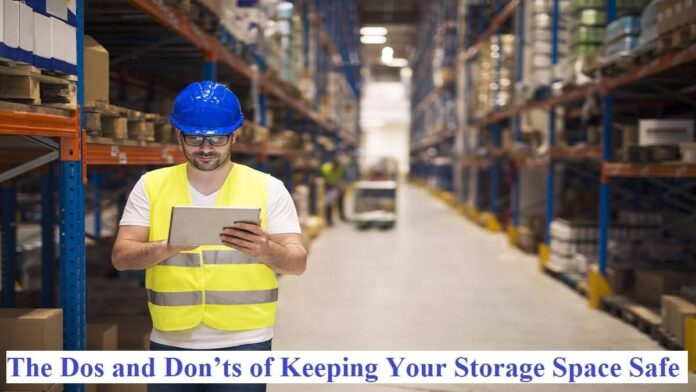When you have gotten to the point where you need to expand your warehouse operation, you know you have hit a huge milestone. However, there is a lot that comes with this milestone. Having a warehouse means that you must feel that you are prepared to take responsibility for the safety of your workers.
Here are some of the dos and some of the don’ts to keeping your warehouse safe, not just for your products, but for your employees and your clients too.
Table of Contents
Don’t Settle For a Cheap Setup
You absolutely mustn’t just go with a decision because it’s the cheapest option, or worse, the most convenient. An unsafe warehouse environment is of no use to anybody, and your employees should not have to work in a space that makes them feel at risk.
After all, their needs are important. This situation can be awful for morale and be one of the catalysts that might cause your business to fail, as employees will feel far less motivated, and consequently will take off more sick days, leave after only working there for a couple of months, and might even suffer from sick building syndrome.
Make Your Warehouse a Great Place to Work
Making your warehouse a great place to work will typically bring far better results. This can include making your employees feel happier and more fulfilled in general, making the production line faster and more efficient to ease their workload, and keeping costs lower overall. Here is how you can improve your workspace:
- The Right Equipment: The right equipment is exactly what you need to meet production targets and help your employees feel confident and safe at work. These are pieces of equipment such as Fluent Conveyors for production lines, for instance, or panel lifters, and even company cell phones. The right equipment, when maintained properly, can help your business for years, meaning that you can get exactly what you need to do without needing to worry about equipment breaking or malfunctioning, which can be a constant concern if you just went for the cheapest option.
This approach can ease many health and safety concerns your workers might have as the equipment they are using is sound and they will be fully trained to operate it. The right equipment, coupled with the right training will improve the speed on the production line, reducing the time it takes to get the finished product to your fleet for distribution to retailers or the end user. - Communicate Efficiently: There is nothing like knowing what is exactly going on. If your workers know what is happening, they are more likely to do a better job and be far more cooperative both with you and their colleagues. They will also have stronger relationships within the work community and will therefore be more likely to stay at their jobs for a longer period of time. It will also increase the quality of the work they produce, as everyone then has enough time to organize what they need to when it comes to getting their part of the job done. There are many things that can help you with this; one of them is team management software. This can boost effective communication, keep everyone on task, and can be especially useful if you need to contact someone who is in another building or off-site, and can help everyone from your office workers to your fleet know what’s happening all day every day without fail.
- Effective Organization: When it comes to keeping people organized, you might need some help. You will need to be organized on many different levels to be able to get running a warehouse down to a finely tuned art. This can be a massive boon to both you and your employees, as they will be able to use organization as a means to become better at their jobs. Effective organization comes from equally effective communications between you and your workers.
Don’t Allow Food in Certain Areas of the Warehouse
Having food on-site can be begging for something bad to happen. It can cause many problems for your warehouse and the hygiene standards within the whole area. Here are some of the risks of letting your workers eat in certain areas.
- Crumbs and Other Food Waste Can Go Moldy: Food goes off, and if your team is eating over products that are being stored on shelves, you are going to face a potentially massive mold problem in a short space of time. Not only is this expensive to clear up, but it is also not worth the risk of a customer getting moldy crumbs or any other type of food waste in their package, as this will only lead to negative customer feedback and less than helpful online reviews.
- Can Attract Pests: This isn’t just seagulls or the occasional stray cat or dog, these are things that can have very serious implications for your business. These are pests like rats and cockroaches. Much like mold, they are tricky to get rid of, and if health and safety know that your employees are working in a space that is populated by pests, some of which may be riddled with disease, you might as well wave your business goodbye. Not only this, pests can damage your warehouse’s structural integrity, by making holes in walls, floors, chewing shelves, and living in the woodwork.
Do Provide Space For Workers to Take Breaks and Have Their Lunch, or Allow Them Off-Site
Having a designated space for your workers to eat and socialize, whether it is on-site or not, can be a great way to ensure that eating in the warehouse is avoided. By making sure they have a warm and sheltered space, you can help them feel safer and more cared for at work. This can help your workers concentrate on the job at hand, which can only have a positive impact on your business.




